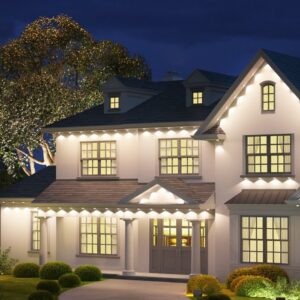
Sustainable home renovation marks a significant shift in how we approach our living spaces, combining style with environmental responsibility. It encourages homeowners to rethink traditional practices by incorporating eco-friendly materials and energy-efficient technologies, ultimately leading to healthier homes and a reduced carbon footprint.
This approach not only enhances the aesthetic value of homes but also promotes sustainability through the use of reclaimed materials, energy-efficient designs, and thoughtful landscaping choices that support local ecosystems.
Sustainable Materials for Home Renovation
Sustainable home renovation involves making choices that not only enhance the beauty and functionality of your space but also have a positive impact on the environment. By selecting eco-friendly materials, homeowners can reduce their carbon footprint, promote healthier living spaces, and support sustainable practices. This segment will highlight some of the most beneficial materials available for renovation projects.
Benefits of Using Reclaimed Wood
Reclaimed wood is a popular choice for renovations due to its aesthetic appeal and environmental advantages. Sourced from old buildings, barns, and other structures, this wood has already lived a full life, giving it unique character and charm. The key benefits of using reclaimed wood include:
- Environmental Impact: Utilizing reclaimed wood helps reduce deforestation and minimizes the demand for new lumber, preserving natural ecosystems.
- Durability: Older wood is often denser and more durable than new wood, resulting in longer-lasting materials.
- Historical Value: Each piece of reclaimed wood tells a story, adding a distinct historical element to your home.
- Cost-Effectiveness: While upfront costs may vary, reclaimed wood can save money over time due to its durability and lower maintenance needs.
Advantages of Bamboo Flooring
Bamboo flooring is increasingly favored as a sustainable alternative to traditional hardwood flooring. Bamboo, a rapidly renewable resource, offers numerous advantages that make it an excellent choice for eco-conscious homeowners:
- Rapid Growth: Bamboo can grow up to three feet in a single day, making it a highly renewable resource.
- Strength and Durability: Despite its lightweight nature, bamboo is known for its high tensile strength, making it resistant to wear and tear.
- Low Environmental Impact: Bamboo requires less water and no pesticides to grow, reducing its ecological footprint.
- Variety of Styles: Available in various colors and finishes, bamboo flooring can complement a wide range of interior designs.
Eco-Friendly Paints and Their Environmental Impact
Choosing eco-friendly paints is crucial for maintaining indoor air quality and minimizing environmental harm. Conventional paints often contain volatile organic compounds (VOCs) that can contribute to air pollution. Here’s a list of some popular eco-friendly paint options and their benefits:
- Natural Paints: Made from plant-based materials, these paints are biodegradable and free from harmful chemicals.
- Low-VOC Paints: These paints have significantly reduced levels of VOCs, making them safer for indoor use without compromising performance.
- No-VOC Paints: Completely free from VOCs, these paints are the safest option for both humans and the environment.
- Milk Paint: An ancient option, milk paint is made from natural ingredients like milk protein, and it is non-toxic and biodegradable.
By opting for sustainable materials like reclaimed wood, bamboo, and eco-friendly paints, homeowners can actively contribute to a healthier planet while creating beautiful living spaces.
Energy Efficiency in Renovation Projects

Energy efficiency plays a crucial role in modern home renovation, not only enhancing comfort but also reducing energy costs and environmental impact. By implementing smart design choices and utilizing advanced technologies, homeowners can significantly boost their property’s sustainability. This section delves into effective methods for improving insulation, incorporating renewable energy sources, and choosing energy-efficient appliances.
Enhancing Insulation in Older Homes
Improving insulation is essential for older homes that may not meet today’s energy efficiency standards. Proper insulation minimizes heat loss in winter and keeps living spaces cooler during summer, leading to substantial energy savings. Consider the following methods for enhancing insulation:
- Attic Insulation: Insulating the attic can prevent heat from escaping. Materials such as spray foam or cellulose are effective in filling gaps and providing high R-values.
- Wall Insulation: Adding insulation to exterior walls can be achieved through blown-in insulation or by removing drywall and installing batts or rigid foam boards.
- Basement Insulation: Insulating your basement walls can reduce moisture problems and heat loss. Use rigid foam board or spray foam for optimal results.
- Window Treatments: Upgrading to double or triple-pane windows significantly improves insulation. If replacement isn’t an option, consider storm windows or using window films to enhance thermal performance.
- Sealing Air Leaks: Identifying and sealing air leaks around doors, windows, and other openings is crucial. Weatherstripping and caulking can effectively minimize drafts.
Incorporating Renewable Energy Sources
Integrating renewable energy sources into home designs not only reduces reliance on fossil fuels but also lowers electricity bills. Various renewable energy technologies can be seamlessly included in renovation projects:
- Solar Panels: Installing photovoltaic panels on rooftops can convert sunlight into electricity, significantly offsetting energy costs. The average residential solar panel system can save homeowners about $15,000 to $30,000 over 30 years.
- Solar Water Heaters: These systems use solar energy to heat water for household use, providing a sustainable alternative to traditional electric or gas water heaters. Homeowners can achieve significant savings on heating costs.
- Geothermal Heat Pumps: Utilizing the earth’s stable temperature, geothermal systems can provide heating and cooling, offering efficiency ratings as high as 400% during peak seasons.
- Wind Turbines: For homes in areas with consistent wind patterns, small wind turbines can generate clean energy, although they may require more space and a higher initial investment.
Energy-Efficient Appliances
Selecting energy-efficient appliances is an integral part of a sustainable renovation strategy. These appliances consume less energy while maintaining performance, leading to long-term cost benefits. Here’s a comparison of some popular energy-efficient options:
| Appliance Type | Energy Efficiency Rating | Estimated Annual Cost Savings |
|---|---|---|
| Energy Star Refrigerators | 20% more efficient than standard models | Up to $200 |
| Energy Star Washers | 40% more efficient than standard models | Up to $150 |
| Energy Star Dishwashers | 12% more efficient than standard models | Up to $130 |
| LED Lighting | 75% less energy than incandescent bulbs | Up to $100 over the lifespan of the bulbs |
Investing in energy-efficient appliances not only contributes to a sustainable lifestyle but also offers a return on investment through lower utility bills.
Integrating Landscaping into Sustainable Renovations

Incorporating landscaping into sustainable home renovations not only enhances the aesthetic appeal of your property but also plays a critical role in promoting environmental health. Thoughtfully designed outdoor spaces can significantly support local biodiversity, manage stormwater runoff, and reduce maintenance requirements, ultimately contributing to a more sustainable living environment.
Designing a Low-Maintenance Garden Plan
Creating a low-maintenance garden plan involves selecting plants and design elements that thrive in your local climate, require minimal care, and support local wildlife. The goal is to develop a space that is both beautiful and functional, while also fostering biodiversity. Key aspects to consider in your garden design include:
- Choose native plants that are well-adapted to your region’s soil, climate, and wildlife needs.
- Incorporate mulch and ground cover plants to suppress weeds and retain soil moisture.
- Utilize hardscaping elements such as pathways and seating areas to reduce lawn areas and minimize maintenance.
- Implement xeriscaping techniques to create a garden that thrives on minimal water.
The combination of these elements will result in an attractive garden that supports local ecosystems while requiring less effort to maintain.
Creating Rain Gardens for Stormwater Management
Rain gardens are strategically designed landscapes that capture and filter stormwater runoff, reducing flooding and improving water quality. By allowing water to soak into the ground, rain gardens help recharge groundwater supplies and minimize the burden on municipal drainage systems.To design an effective rain garden, consider the following steps:
- Select a suitable location that typically receives runoff from roofs, driveways, or parking areas.
- Choose native plants that can tolerate both wet and dry conditions, contributing to the garden’s resilience.
- Incorporate a gentle slope to ensure water flows into the garden, allowing for proper drainage and filtration.
Implementing a rain garden not only helps manage stormwater effectively but also enhances the ecological value of your property.
List of Native Plants and Their Benefits
Planting native species is an essential component of sustainable landscaping, as these plants are uniquely adapted to local conditions and provide vital resources for wildlife. A well-chosen list of native plants can support pollinators, improve soil health, and reduce the need for chemical fertilizers and pesticides.Here are some examples of native plants that thrive in various regions and their benefits:
- Echinacea purpurea (Purple Coneflower): Attracts pollinators and provides seeds for birds in the fall.
- Asclepias tuberosa (Butterfly Weed): Essential for monarch butterflies; blooms brightly throughout summer.
- Rudbeckia hirta (Black-eyed Susan): Blooms from summer to fall, providing nectar for bees and butterflies.
- Carex (Sedge): Ideal for wet areas, helping to stabilize soil and filter runoff.
Incorporating these native plants into your landscaping not only enhances biodiversity but also creates a vibrant and sustainable outdoor environment.
Epilogue
In summary, embracing sustainable home renovation is more than just a trend; it’s a commitment to creating spaces that are both beautiful and environmentally friendly. By choosing sustainable materials, improving energy efficiency, and integrating nature into our designs, we can ensure that our homes contribute positively to the planet for generations to come.
FAQ Corner
What are the benefits of using reclaimed materials?
Using reclaimed materials reduces waste, lowers environmental impact, and often adds unique character to your home.
How can I improve my home’s energy efficiency?
Enhancing insulation, upgrading to energy-efficient appliances, and incorporating renewable energy sources like solar panels can significantly improve energy efficiency.
Are there specific plants that are better for sustainable landscaping?
Yes, native plants are ideal as they require less maintenance and water, and they support local wildlife.
What types of eco-friendly paints should I consider?
Look for paints labeled as low-VOC or zero-VOC, which are less harmful to indoor air quality and the environment.
Can sustainable home renovation increase property value?
Absolutely! Sustainable renovations can enhance property value by making homes more appealing to environmentally-conscious buyers.





